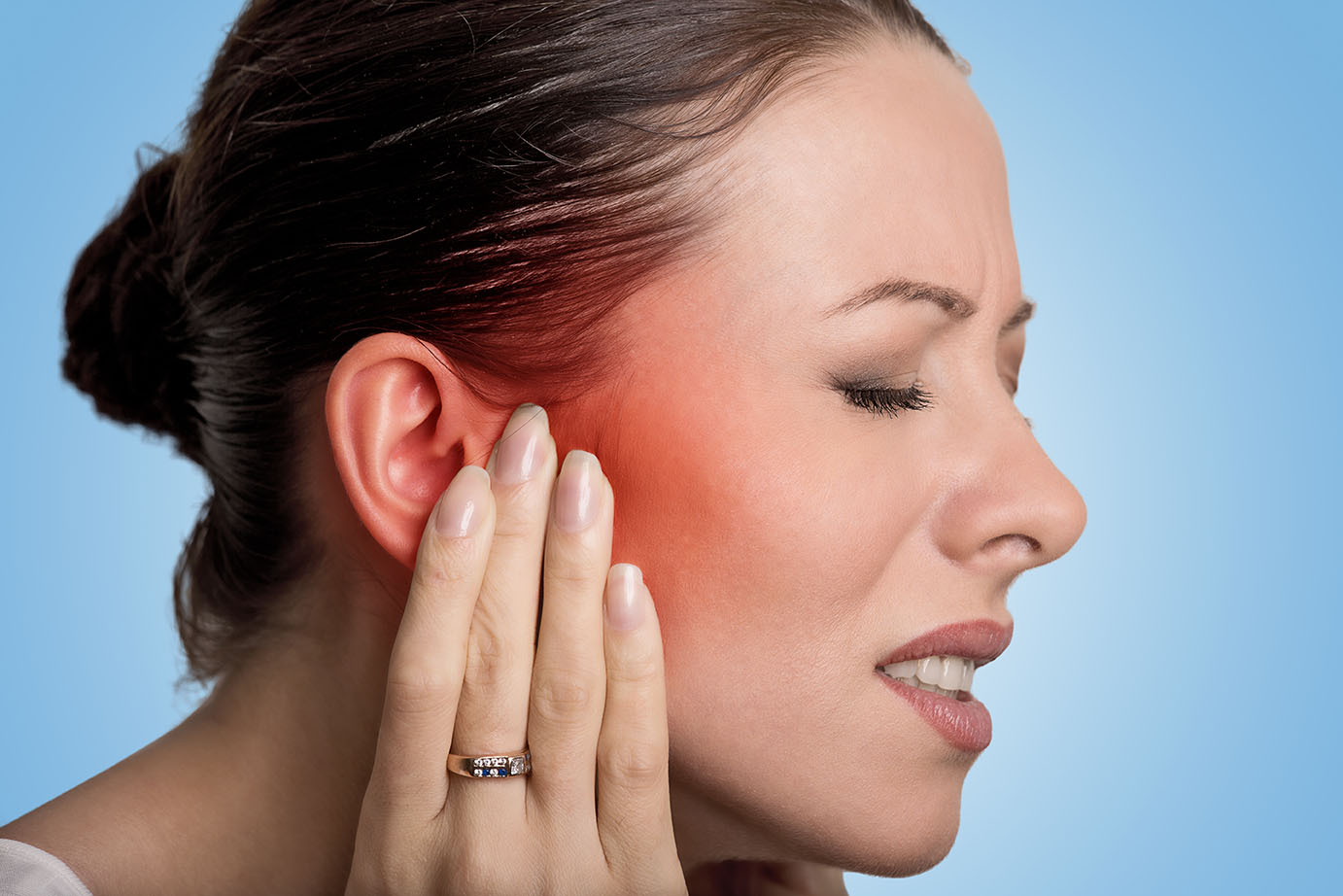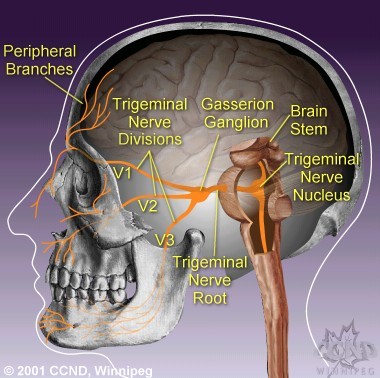What is trigeminal neuralgia?
Trigeminal nerve is the 5th pair of cranial nerve at our brain. It contains mixed type of nerve fibers: general somatic sensory, visceral sensory fibers and motor fibers for muscle of mastication.
Trigeminal nerve thus controls the feeling of our face, mouth, nose and it also controls the movement of our masticatory muscle.
Trigeminal nerve sub-divides into the first Ophthalmic branch for the forehead region, the second maxillary branch for the cheek region and the third mandibular branch for the jaw region.
- Ophthalmic branch: part of forehead, face, eye and nose
- Maxillary branch: next to the upper lip, face, nose, upper alveolar and gums
- Mandibular branch: the lower lip, ears, part of f forehead, lower row of teeth, gums and tongue
 |
 |
The main cause of trigeminal neuralgia: external factors compressing on the nerve and make it short-circuit.
Primary:
- Vascular loops compression
Secondary:
- Multiple sclerosis
- Brain stem tumors compression
Risk factors of developing primary trigeminal neuralgia
- Those with a family history
- More than 50 years old
- Female
- High blood cholesterol
- High blood pressure
- Diabetes mellitus
- Smoker
Characteristics of trigeminal neuralgia
No indication or warning:
Sharp attack of pain, without any warning, usually at one side
Triggered by certain movements or the external factors: air flow, chewing, temperature changes, etc.
Short but intense:
Patients often describe the pain as burning, electric shock, needles, or stabbed by a knife, some cases may accompanied by other symptoms when pain appears:
e.g. facial muscle twitching, tearing, drooping of saliva, facial flushing, and conjunctival congestion, etc.
May be more serious:
As the disease progresses and worsens, disease-free intervals will be getting shorter and attacks become more frequent.
Characteristics of trigeminal neuralgia
- About 60% cases of pain starting from jaw / mouth region.
- About 30% cases of pain starting from upper lips, eyes or eyebrows.
- Less than 5% of the pain affects nerve
Common trigger points:
- Chewing
- Talking
- Smiling
- Drinking hot or cold beverages
- Touching
- Shaving
- Tooth brushing
- Air flow
- Temperature changes
Trigeminal neuralgia in common?
- Studies show that every year, each of 10 million people, there are about 12 people suffering from trigeminal neuralgia
- Hong Kong population projections: about 800 new cases each year
- However, most of the cases have not been diagnosed accurately.
Trigeminal neuralgia is often confused with other diseases or diagnosis:
- Trigeminal neuralgia
- Toothache
- Temporomandibular joint dysfunction
How to diagnose trigeminal neuralgia
Though diagnosis for neuropathic pain is not difficult, but there are often misdiagnoses.
We mainly rely on clinical judgment, but sometimes X ray, CT scan and MRI (magnetic resonance imaging) do help in diagnosis.
In addition, doctors must exclude the possibility of tumors, such as Acoustic neuromas, Cholesteatoma, Hemangioma, Meningioma or Epidermoid cyst, etc.






